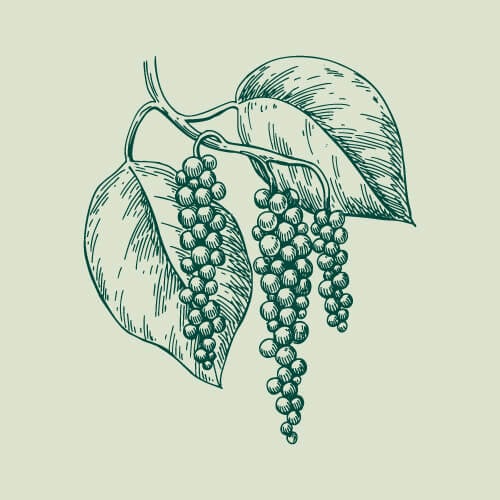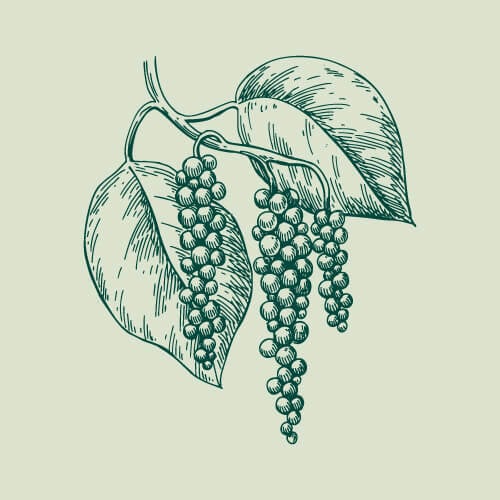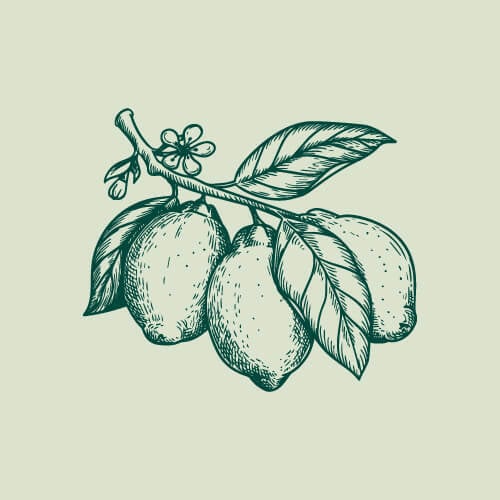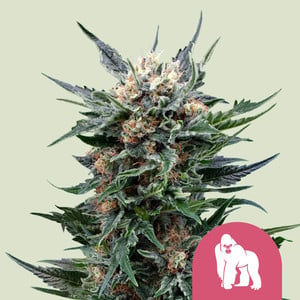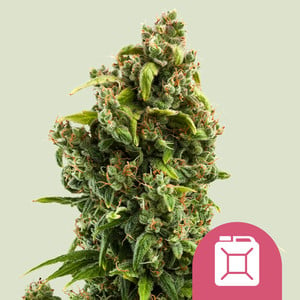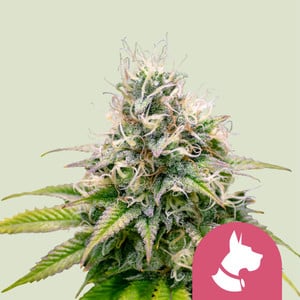.
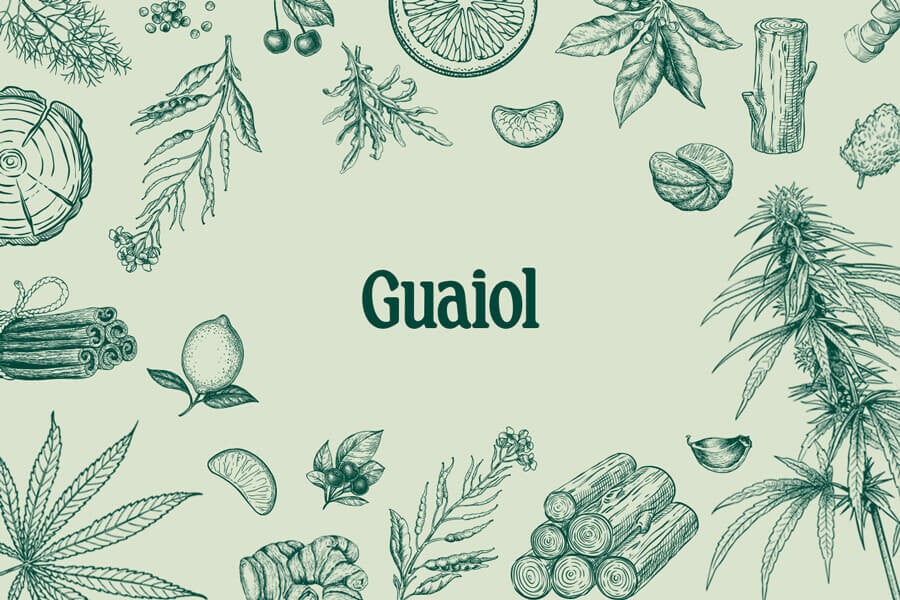
Guaiol: A Lesser-Known Marijuana Terpene
Many cannabis users are familiar with terpenes such as myrcene and limonene. But there are over 100 other, lesser-known terpenes produced by weed flowers. Among them, guaiol has attracted the attention of researchers looking to assess its clinical potential. Learn everything you need to know about this terpene here.
Contents:
Alongside cannabinoids such as THC and CBD, weed flowers produce a suite of terpenes that underscore the flavors, aroma, and effects of each strain. These molecules synergise with cannabinoids to steer the cannabis high, and they play a vital role in plant health by protecting them against pests and other stressors.
While the most abundant terpenes in cannabis, such as myrcene and pinene, receive most of the attention, weed flowers also produce many minor terpenes that are often under-looked. Among these constituents, guaiol ranks as one of the most interesting. Continue reading to learn everything you need to know about this compound, from its chemistry to its effects.

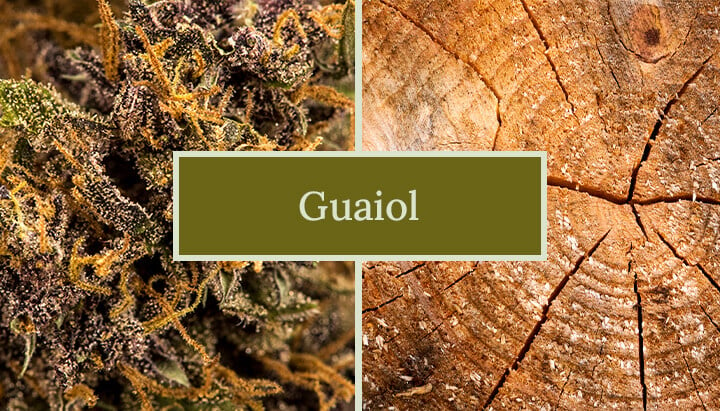
Chemistry of Guaiol
Terpenes fall into certain groups depending on their structure, though all of these compounds are made up of five-carbon building blocks called isoprene units. Small, volatile terpenes known as monoterpenes are made up of just two isoprene units. In contrast, as a sesquiterpene, guaiol possesses three isoprene units and a total of 15 carbon atoms. The molecule features a complete molecular formula of C₁₅H₂₆O. While most terpenes are oils, guaiol has a liquid structure at room temperature and a low boiling point of 92°C, meaning it will vaporize at relatively low temperatures.
Ongoing studies are assessing the action of a range of terpenes on the endocannabinoid system (ECS). So far, researchers have found that terpenes including humulene, pinene, and caryophyllene directly bind to ECS receptors, raising the possibility that they could work in symphony with THC and other cannabinoids. Right now, no evidence suggests that guaiol directly interacts with the ECS, but this understanding could change in the near future.
Not exclusive to cannabis, guaiol shows up in a range of plant species. You’ll also encounter the terpene in cypress pine trees, lilac flowers, nutmeg, tea tree oil, apples, cumin, ginger, ginseng, and valerian.
Aroma and Flavor of the Guaiol Terpene
Guaiol occurs in minor concentrations in most cannabis strains. However, it plays a contributing role in the flavor and aroma of select specimens. The molecule imparts a complex set of scents and tastes, including hints of wood, rose, pine, fruit, earth, spice, and citrus.
Effects Associated With Guaiol in Cannabis
The exact effects of guaiol in cannabis are hard to pinpoint as the terpene shows up in low concentrations, alongside many other chemicals that also influence the effects of each cultivar. However, some users report that strains higher in guaiol provide soothing, relaxing, and elevating effects. This terpene likely contributes to what many cannabis users would traditionally refer to as an “indica” effect. Strains higher in guaiol are therefore potentially suitable for enjoying during relaxing afternoons and evenings when you’re looking to kick back and unwind.
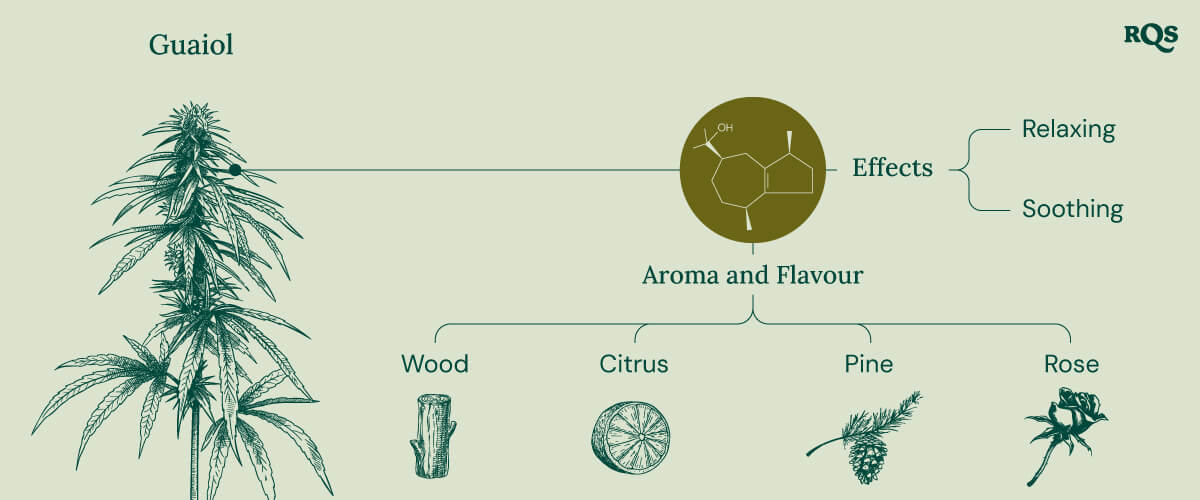
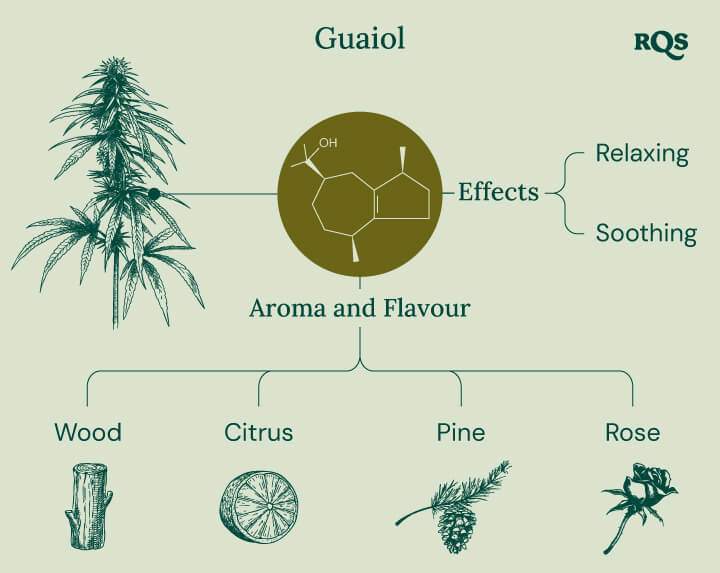
Guaiol: A Look at the Research
Over the last few decades, scientists have put in great effort to find out how terpenes work in the body and what their clinical significance might be. While less known among terpenes as a whole, several research teams have tested guaiol in different models of disease in the hunt for therapeutic potential. Check out what we know so far about the guaiol terpene’s benefits.
-
Antibacterial
Back in 2007, a research team from the University of Karachi, Pakistan, used different species of fungi to molecularly transform guaiol into several newly discovered compounds. They then went on to test[1] these new metabolites against several bacterial strains, which displayed some level of inhibition against the pathogens.
-
Antioxidant
Guaiol occurs as one of the most dominant terpenes in Melaleuca leucadendra essential oil. Using three different in vitro tests, researchers from Cuba found that this oil displays significant antioxidant activity[2], suggesting that guaiol could help protect against oxidative damage.
-
Antiparasitic
Parasites present a global health issue. A 2016 paper[3] published in the journal BMC Complementary Medicine and Therapies tested a high-guaiol essential oil against the parasite Leishmania amazonensis—a lesion-causing protozoan transmitted by horsefly bites. The results showed the oil to have effectiveness against the parasite at varying doses.
-
Cell Apoptosis
Apoptosis simply refers to the ability of healthy human cells to terminate themselves when they become damaged or diseases. Cancer cells lack this function, which enables them to proliferate. Researchers have turned their attention towards terpenes as potential therapeutics against tumours, partly because of their ability to induce apoptosis in early studies. So far, a 2016 study tested guaiol against non-small cell lung cancer (NSCLC) models. The results of the study signal the need for more comprehensive research on guaiol's effect on tumours.
-
Anti-inflammatory
Low-grade yet consistent inflammation plays a key role in many states of chronic disease, leading researchers to look for effective anti-inflammatory agents in nature. A large review[4] that screened a host of naturally derived compounds documents that guaiol, alongside other terpenes found in Aloysia gratissima essential oil, reduced swelling in a mouse study.
Guaiol: A Little-Know Cannabis Terpene
And just like that, you’re much more familiar with one of the most overlooked compounds in weed flowers. While guaiol only occurs in small concentrations in most cannabis strains, this terpene offers notable notes of wood, spice, and fruit, as well as relaxing and soothing effects. Researchers are still getting to grips with these terpene, but it could emerge as an important molecule in the development of new cannabis chemotypes in the future.
Weed Strains High in Guaiol
If you like the sound of guaiol and want to experience the terpene for yourself, try growing and smoking any of the strains below. Not only do they provide great yields, but they contain more guaiol than many other strains out there.
Royal Gorilla
Royal Gorilla inherited high levels of guaiol from parent strains Sour Dubb, Chem Sis, and Chocolate Diesel. With a massive THC content of 27%, this variety exerts a long-lasting high that soothes the body and clears the mind. Enjoy flavors of chocolate, diesel, fruit, and pine with every hit.
You can expect Royal Gorilla plants to grow to 90–160 cm indoors depending on the training techniques and container size used. Consider applying LST during week three to keep plants compact and productive, and prepare to harvest 500–550 g/m² after a flowering stage of 8–10 weeks. Outdoors, plants peak at 170 cm and produce 550–600 g/plant ready to harvest during the middle of October.
Royal Gorilla
|
|
Sour Dubb x Chem Sis x Chocolate Diesel |
|
|
18 to 19 oz/m² |
|
|
3 to 5 feet |
|
|
8 - 10 weeks |
|
|
THC: 27% |
|
|
Sativa 50% Indica 50% |
|
|
19 to 21 oz/plant |
|
|
4 to 6 feet |
|
|
Middle of October |
|
|
Calming, Clear |
Sour Diesel
Sour Diesel received above-average concentrations of guaiol from parent strains Original Diesel, Northern Light, Shiva, and Hawaiian. Prepare for a clear-headed and stoning high accompanied by flavors of citrus, fruit, herbs, pepper, and sourness. Sow your seeds directly into 15 l pots for a straightforward growing experience without the need to transplant.
Expect indoor plants to peak at 160 cm and produce up to 525 g/m² after a flowering phase of 10–11 weeks. Grow this strain outdoors and she’ll reach a height of 200 cm. Get ready to harvest and process 550–600 g/plant during late October.
Sour Diesel
|
|
Original Diesel x (Northern light x Shiva x Hawaiian) |
|
|
17 to 18 oz/m² |
|
|
3 to 5 feet |
|
|
10 - 11 weeks |
|
|
THC: 19% |
|
|
Sativa 70% Indica 30% |
|
|
19 to 21 oz/plant |
|
|
5 to 7 feet |
|
|
Late October |
|
|
Clear, Physically Relaxing |
Kali Dog
This high-guaiol strain descends from legendary parent genetics Chemdawg and Sour Diesel. Her moderate THC content of 18% makes for a mellow and subtle high, and her diverse mix of terpenes gives rise to flavors of citrus, diesel, herbs, and skunk.
Maintain a temperature of around 25°C during germination and veg to facilitate rapid growth. Expect Kali Dog to peak at a height of 160 cm indoors and to produce eye-catching pink-green buds. You’ll pull in a yield of up to 500 g/m² after a flowering time of 8–10 weeks. Outdoors, Kali Dog will grow up to 210 cm and produce up to 550 g/plant when grown in a sunny spot.
Kali Dog
|
|
Chemdawg x Sour Diesel |
|
|
16 to 19 oz/m² |
|
|
3 to 5 feet |
|
|
8 - 10 weeks |
|
|
THC: 18% |
|
|
Sativa 55% Indica 45% |
|
|
18 to 19 oz/plant |
|
|
6 to 7 feet |
|
|
Late October |
|
|
Clear, Uplifting |
Haze Berry
Finally, we come to Haze Berry. Also packed with guaiol, this sativa-dominant hybrid descends from Blueberry and Shining Silver Haze. Her buds combine a THC content of 20% with medium levels of CBD and elevated levels of guaiol to produce a physically relaxing and powerful body high.
Train indoor plants early in the vegetative phase and they’ll peak at just 60 cm, making them ideal for stealthy growers. After a flowering phase of 9–11 weeks, these plants will treat growers to yields of 525–575 g/m². Outdoors, plants peak at 180 cm and produce 600–650 g/plant ready to harvest during late October.
Haze Berry
|
|
Blueberry x Shining Silver Haze |
|
|
18 to 20 oz/m² |
|
|
2 to 3 feet |
|
|
9 - 11 weeks |
|
|
THC: 20% |
|
|
Sativa 60% Indica 40% |
|
|
21 to 23 oz/plant |
|
|
5 to 6 feet |
|
|
Late October |
|
|
Long Lasting , Physically Relaxing, Powerful |
- Microbial transformation of guaiol and antibacterial activity of its transformed products https://pubmed.ncbi.nlm.nih.gov
- Phytochemical analysis and in vitro free-radical-scavenging activities of the essential oils https://pubmed.ncbi.nlm.nih.gov
- Essential oils: in vitro activity against Leishmania amazonensis, cytotoxicity and chemical composition https://www.ncbi.nlm.nih.gov
- Compressed fluids and phytochemical profiling tools https://www.sciencedirect.com




























